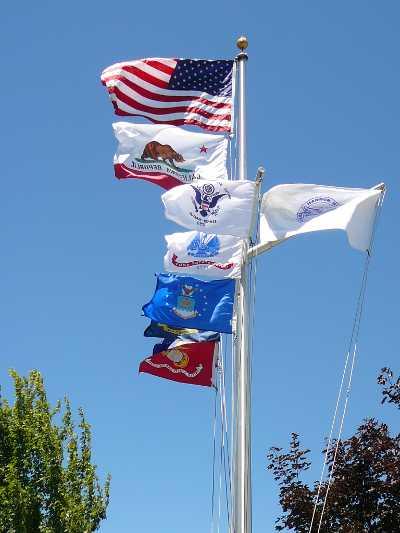- Lake County News reports
Lake County Farm Bureau among honorees at California Farm Bureau annual meeting
To recognize exceptional work on behalf of family farmers and ranchers, the California Farm Bureau Federation presented awards to county Farm Bureaus from across the state during a ceremony at the 95th CFBF Annual Meeting in Monterey Sunday night.
The Lake County Farm Bureau was judged County of the Year among Farm Bureaus with 650 or fewer members.
It led response to the proposed protection of a local fish, which could affect farmers’ ability to draw water from Clear Lake and its tributaries, and organized meetings and outreach to affected people, and emphasized the potential impact to the wider community.
The Lake County Farm Bureau also created a new membership brochure, formed a Rural Crime Prevention Committee and held a number of safety workshops for farmers.
The San Joaquin Farm Bureau Federation earned top honors as winner of the Golden State Award, given to the county Farm Bureau that accomplishes the most outstanding body of work during the year.
The county Farm Bureau offered a wide range of services to its members – including 15 training sessions on topics such as heat safety, first aid, tractor safety and regulatory compliance – and took an effective advocacy role on numerous issues, including staging a food safety forum and making several legislative visits to Sacramento.
It also staged a variety of educational events, led by an Ag Venture program that reaches nearly 12,000 third grade students, and maintained an active presence in community affairs and the local media.
San Joaquin also was named County of the Year among Farm Bureaus with 2,000 or more members.
The Modoc County Farm Bureau received the Innovator Award for sponsoring a unique activity, in this case a survey of the wild horse population in the Modoc National Forest.
When forest staff indicated it lacked the resources to undertake the project, the Modoc County Farm Bureau organized a survey using retired agency specialists and volunteers to collect and interpret data, and to prepare reports and environmental documents.
The survey, which was completed ahead of schedule and under budget, showed the forest population of wild horses is five times what grazing land in the national forest can sustain.
For Farm Bureaus with 651 to 1,000 members, the Tehama County Farm Bureau earned County of the Year honors.
Among its activities, the Tehama County Farm Bureau conducted a bus tour of local agriculture for local and state leaders, worked to create a county ordinance to deter walnut theft, sponsored successful educational events for fourth grade and sixth grade students, purchased a portable milking machine for use at educational events, co-sponsored a giant pumpkin weigh-off and promoted agricultural tourism in Tehama County.
The County of the Year award for Farm Bureaus with 1,001 to 1,999 members was presented to the Santa Cruz County Farm Bureau, which took the lead in defeating a local ballot measure that would have annexed prime farmland into the city of Watsonville so it could be developed.
Among its other activities, the Santa Cruz County Farm Bureau enhanced its Web site and social media feeds, launched an e-newsletter, designed an award-winning display at the California State Fair and held poster and poetry contests for local students.
Eight other county Farm Bureaus earned President’s Awards for outstanding programs within their membership categories: Kern, Kings, Modoc, Monterey, Napa, Sacramento, Tulare and Yuba-Sutter.
In addition to those county Farm Bureaus, 14 others earned County Activities of Excellence Awards: Butte, Calaveras, Colusa, Imperial, Mendocino, Riverside, San Diego, Shasta, Solano, Sonoma, Stanislaus, Tuolumne, Ventura and Yolo.
The California Farm Bureau Federation works to protect family farms and ranches on behalf of nearly 78,000 members statewide and as part of a nationwide network of more than 6.2 million Farm Bureau members.




 How to resolve AdBlock issue?
How to resolve AdBlock issue? 



